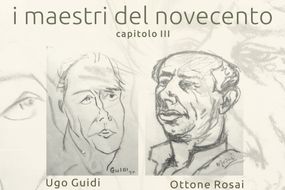From 15 June to 27 June 2025
Accepted the Artsupp Card

Via Civitali, 33 , Forte dei Marmi, Italy
Opening hours
| opens - closes | last entry | |
| monday | 16:00 - 16:00 | 16:00 |
| tuesday | Closed now | |
| wednesday | 16:00 - 16:00 | 16:00 |
| thursday | 16:00 - 16:00 | 16:00 |
| friday | 16:00 - 16:00 | 16:00 |
| saturday | 16:00 - 16:00 | 16:00 |
| sunday | Closed now |
The museum is always open by appointment at 3483020538
Always
Discount of 20%
There are no ongoing exhibitions.
Free
Free guided tours available upon request for groups at Casa Museo Ugo Guidi.

From 15 November to 6 December 2025
The Masters of the 20th Century: Ugo Guidi and Ottone Rosai

Ugo Guidi Museum, Massa